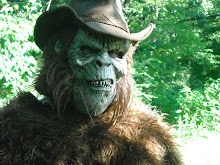Bats
There are about 39 species in the United States. Most bats are economically valuable because of the large number of insects they consume. The body of the bat is mouselike and usually covered with fine fur. The face varies greatly from one species to another; many species have complex appendages on the snout and projections, or false ears, in front of the true ears; the ears themselves are often very large and elaborately convoluted. These facial structures are part of the sensory apparatus that emits and receives sound vibrations. Some bats are solitary, living in caves, crevices, hollow trees, or attics; other species are communal, with thousands or even millions of bats roosting together in a cave or on branches in a section of forest. In some species of communal bats, the entire colony leaves the roost together in the evening and returns together in the morning; in others, individuals come and go at different times. Bats of northern regions migrate, hibernate, or both in winter. In most species, males and females do not associate except during the mating season. Females of most species bear a single young in the summer of each year. The young are then carried by the mothers for a few days, after which they are left in the roost when not nursing; they begin to fly in a few weeks. The life span of some bats is 20 years in captivity. |

Animal control, animal removal georgia, animal trapping georgia, wildlife control georgia, wildlife removal georgia, wildlife trapping georgia, Gray Squirrel Removal georgia, Gray Squirrel Trapping, Gray Squirrel control, Gray Squirrel Trapping, flying Squirrel Trapping Georgia, flying Squirrel control, flying Squirrel removal, bat removal, bat control, bat exclusion, beaver trapping, beaver removal, beaver control georgia, Rat trapping, rat removal georgia, rat control, raccoon trapping georgia, raccoon removal, raccoon control, coyote trapping georgia, coyote removal, coyote control, opossum trapping, opossum removal georgia, opossum control, fox control, fox trapping georgia, fox removal georgia, bird control georgia, bird exclusion georgia, mole control georgia, muskrat trapping georgia, muskrat removal, snake removal georgia, homey bee removal georgia, honey bee control, carpenter bee removal georgia, carpenter bee control, wasp removal georgia, wasp control, hornet control, hornet removal georgia, yellow jacket removal, yellow jacket control georgia, animal damage repairs and exclusion, dead animal location removal georgia. Honey bee nest removal, hornet nest removal, rodent removal, how to remove bats, how to remove squirrels, critter control, critter removal.
We Service: North Fulton county, Cherokee conty, Forsyth county, Dawson county, Pickens county, Gilmer county, Lumpkin county, Hall county, Gordon county, Murray county, Fannin county, Roswell, Alpharetta, Woodstock, Cumming, Atlanta, Flowery Branch, Suwannee, Oakwood, Gainesville, Ball Ground, Canton, Milton, Blue Ridge, Cherry Log, Ellijay, Duluth, Buford, Talking Rock, Waleska, Jasper, Dawsonville, Big Canoe, Dahlonega,







No comments:
Post a Comment